Tigers Demonstrate Hard Work and Determination
The Maywood Lady Tiger’s consists of 8 girls on their team, and they are: seniors: Abby Werkmeister, Brooke Moore and Corey Eshleman; juniors: Tyler Esslinger and Marisa Foster; freshmen: Kayla Minary, Grace Koubek and Hope Stone; Head Coach: Kim Stengel; Assistant Coach: Bryson Kennedy; and Student Managers: Bailey, Brown, Lydia Fritsche, Paige Wood and Karlie Gerlach. Coach Stengel commented, “The girls have been working very hard in practice. We plan to have a great season and grow together as a team.” The girls are well conditioned since they only have 8 players able to play and need to run constantly for roughly 36 minutes. Things have gone well for them so far with a win loss ratio of 5:6.
The Maywood Boys Basketball Team consists of 12 boys on their team, and they are: senior: Luke White; juniors: Calyn Werkmeister and Jace Walther; sophomores: Dayne Littell, Devon Littell, Tucker Hartley, Bryar Gerlach, Gage Seiler and Pake Johnston; freshman: Ethan Plummer, Paul White and Connor Williams; Head Coach: Charles Jones; Assistant Coach: Dustin Kinnison; and Student Managers: Tate Hartley, Parker Johnston, Jacob Williams, Dakota Werkmeister, and Dalton Littell. Coach Jones stated “For a young group they need to keep working hard to get better every day. The boys have shown improvement but need to continue to improve.” The boys have been playing hard and trying their best and have a win loss ratio of 1:10. The number of games the boys and girls will play depends on advancing in upcoming tournaments, but they will play at least 21 games each this season.
From New York to London, Paris to Beijing, Sarajevo to Dafar to Buenos Aires to Los Angeles, and everywhere in between the game of Basketball is played. It’s played in the city parks of New York and the dusty plains of Africa, and the expensive designed courts of the NBA. The game is played wherever someone can get a ball, and a mounted ring-like object. Unlike other sports that require multiple people and a lot of equipment, Basketball only requires a ball and the willingness to play. The first basketball type game may have been played by the early Olmec people of ancient Mexico as early as 500 years ago. The Aztec, and Mayan cultures also had a game similar to basketball, only instead of a rubber ball they used the decapitated skulls of their conquered foes. Ghastly! The First true basketball game as we know it was on January 20th, 1892 in Springfield, Massachusetts. Canadian Doctor James Naismith invented the game for the YMCA to play during the winter months. Naismith wrote simple rules for the game, and nailed up two peach baskets for hoops, most of the original Naismith rules are still in place today. Some of the rules have changed a bit, and new rules have been added since then, such as in the original game bouncing the ball was prohibited. Of the 13 rules, nine have been modified and kept in the modern game of basketball, the rest have been disregarded. The first game consisted of 18 players, or nine to a team which was standard to the baseball teams of the day. Since Naismith or the YMCA didn’t have the money to design a new ball they used a soccer ball. The concept of the game must have been foreign to the players as the game was played for 30 minutes and the final score was 1-0.
Basketball Passing Fundamentals
Basketball is a team game. By definition, that means all players are involved with the process of playing the game and should function as one. One of the primary skills created to accomplish this is passing. Yet, passing remains one of the most under-taught, under-emphasized, and under drilled skill in the game!!
Players assume the values that the coach places on each aspect of the game. When teaching passing it is important that the coach teach not only the skill, but the mentality as well. Too many players think of passing as something to do when they don't have a shot as opposed to an unselfish act that is designed to include other players.
When teaching younger players, be aware of their physical and mental limitations. Young players usually lack the strength necessary to make the plays that they believe can be successful (like the ones they see on television) and they are still developing their sense of space and time. In addition, their recognition skills can only be honed by experience. Passes that look open to them often are not because they do not have the experience to know how long it takes to get from point A to point B and bad passes are often a result of slow recognition. In either case, negative reinforcement of the attempted pass often results in a reluctance to make the next pass. The long term effect could be a player who does not understand the value of passing and takes no joy in it.
Types of Passes
There are essentially two types of passes:
- Air Pass - The pass travels between players without hitting the floor.
- Bounce Passes - The pass is thrown to the floor so that it bounces to the intended receiver
Teaching Points
When teaching passing, points of emphasis should be:
- A good pass is a pass a teammate can catch
- When passing, step toward your receiver.
- When catching, step toward the pass
- Like shooting, the ball should have a backspin to it. This is accomplished by following through on every pass.




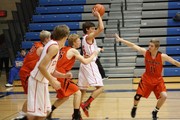
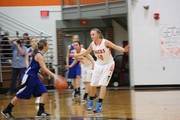
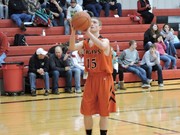
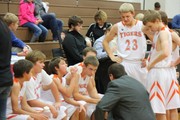
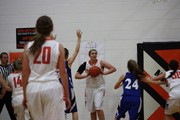
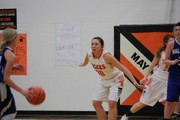
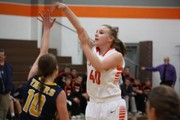
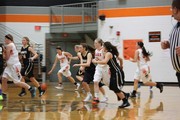
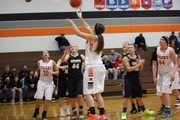
.jpg)